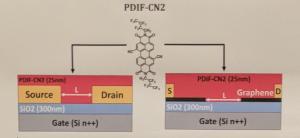Researchers produce graphene by mixing oxidized graphite with bacteria
Researchers at the U.S-based University of Rochester, along with colleagues at Delft University of Technology in the Netherlands, have designed a way to produce graphene materials using a novel technique: mixing oxidized graphite with bacteria. Their method is reportedly a more cost-efficient, time-saving, and environmentally friendly way of producing graphene materials versus those produced chemically, and could lead to the creation of innovative computer technologies and medical equipment.
 From left to right:graphite (Gr), graphene oxide (GO), microbiallyâreduced graphene oxide (mrGO), and chemicallyâreduced graphene oxide (crGO)
From left to right:graphite (Gr), graphene oxide (GO), microbiallyâreduced graphene oxide (mrGO), and chemicallyâreduced graphene oxide (crGO)
"For real applications you need large amounts," says Anne S. Meyer, an associate professor of biology at the University of Rochester. "Producing these bulk amounts is challenging and typically results in graphene that is thicker and less pure. This is where our work came in". In order to produce larger quantities of graphene materials, Meyer and her colleagues started with a vial of graphite. They exfoliated the graphite-shedding the layers of material-to produce graphene oxide (GO), which they then mixed with the bacteria Shewanella. They let the beaker of bacteria and precursor materials sit overnight, during which time the bacteria reduced the GO to a graphene material.








